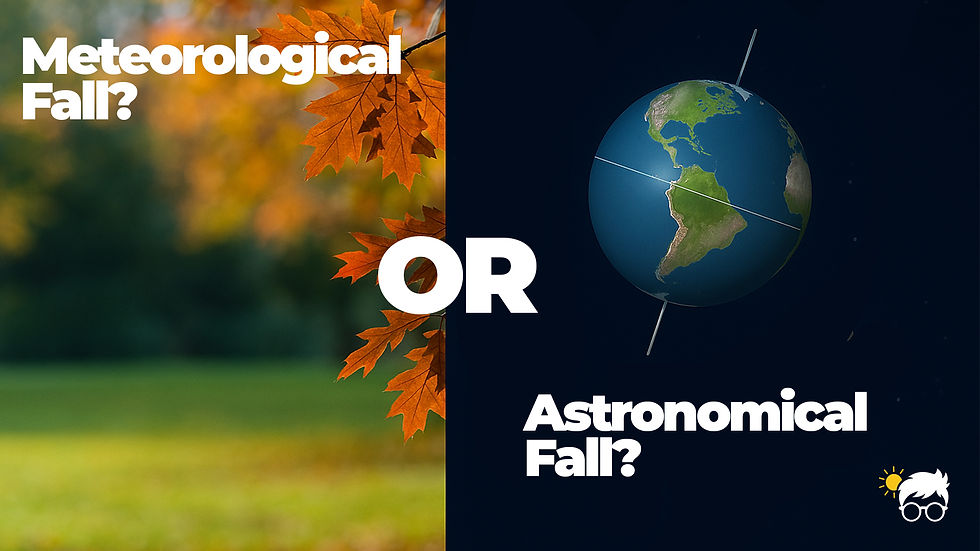Goodbye, golden evenings: why do days get shorter in fall (and how ‘fall back’ makes it worse)
- Ric Kearbey

- Sep 23
- 3 min read

If you’ve noticed the evenings feel a little shorter, you’re not imagining things. The first day of fall is officially here, and that golden after-dinner sunshine? It’s packing up and heading south.
Let’s dig into what happens to our daylight (and our temps) as autumn rolls in.
Why do days get shorter in fall and how much daylight do we really lose?
“People often ask why do days get shorter in fall compared to summer. The reason is that our hemisphere is leaning away from the sun, which shortens the arc the sun travels across the sky each day.”
How much daylight are we losing? That depends on where you live.
Up North (Minnesota, Michigan, New England): The sun pulls a fast one on you. Daylight drains away at more than 3 minutes a day, leaving you with about 4½ fewer hours of sunshine by Christmas. Cue the 4 PM sunsets.
Middle of the country (St. Louis, Chicago, Kansas City): You’ll lose about 3½ hours of daylight this season. Not as brutal as the far north, but you’ll definitely notice when the tailgate wraps in darkness.
Down South (Florida, Texas, Gulf Coast): Don’t get too smug. Even here, the days shrink by nearly 2 hours. Yes, Florida, your sunsets will still feel “early,” even if you’re still in shorts.
What happens to the temperatures?
As daylight fades, so do the highs.
Across the Midwest and Northeast, average temperatures dip 10 to 20 degrees through fall. The ACs finally get a break.
In Florida and the Gulf Coast, the slide is gentler, maybe just a handful of degrees. Still, when Sarasota hits 72°, the hoodies come out like clockwork.

The big clock switch: fall back and fade out
As if losing daylight naturally wasn’t enough, we also roll the clocks back one hour on Sunday, November 2. That is when “fall back” kicks in, and sunsets suddenly feel like they have fallen off a cliff.
In Chicago, sunset on November 1 is around 5:45 PM. The very next evening, after the time change, it plummets to 4:45 PM. Rush hour feels like midnight, and your dog is convinced you are late for dinner.
Down in Tampa, it is a little kinder. Sunset goes from about 6:45 PM on November 1 to 5:45 PM on November 2. Still early, but at least you have an extra hour of light compared to your northern friends shivering in the dark.
The time change does not actually steal daylight. It just shifts it to the morning. But for most of us, the evenings feel robbed. Goodbye golden hours, hello early porch lights.
How long does fall last?
Here is the sneaky part: fall is a marathon, not a sprint. It stretches until December 21, the winter solstice. That means we will be living this daylight drip-drip-drip for nearly three more months.
And if you need a holiday countdown, that is only 93 days until Christmas. Yep, the season of pumpkins runs almost all the way into peppermint.
Nerdy Bottom line
Fall does not just sneak up on us. It reshapes our days. Less light, cooler temps, and earlier sunsets change the way we live. But it also gives us football nights, cozy sweaters, and pumpkin spice everything.
So wave goodbye to those summer sunsets. Fall may steal your daylight, but it pays us back in full with the vibes.




Comments